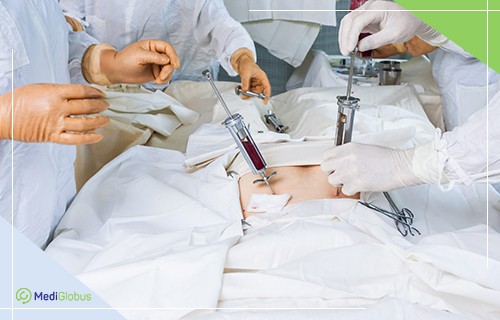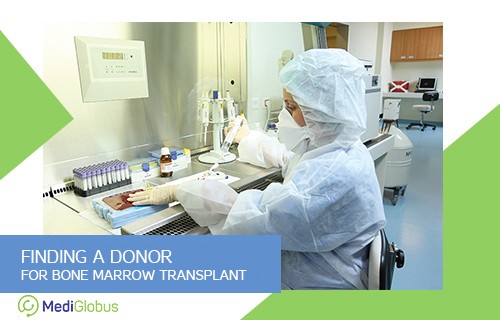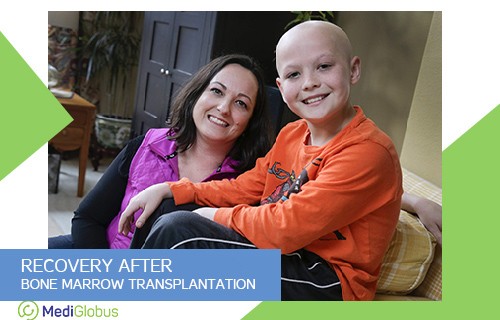Bone marrow transplant is the last hope for blood cancer patients. This is a surgical procedure that is straightforward, but requires lengthy rehabilitation under sterile conditions. If the bone marrow is successfully transplanted, the person can beat cancer and get a second chance at life. Only the most experienced doctors can be entrusted with such responsibility. Doctors from foreign clinics have extensive experience in such operations. On average, over 18,000 transplants are performed abroad.
What is a bone marrow transplant?
A bone marrow transplant is the transplantation of healthy stem cells in order to resume the process of hematopoiesis. These cells are called hematopoietic cells – they are the precursors of blood cells.
There are several types of hematopoietic cell transplantation. The easiest one is to transplant the patient’s own cells (autologous transplant). If this type of procedure is not possible, an allogeneic transplant is prescribed – from a close relative or from a donor with an identical phenotype, who is not a relative.
Bone marrow is transplanted in the treatment of blood diseases: lymphoma, leukemia (leukemia), anemia, myeloma, dysplastic syndromes, bone marrow aplasia.

Contraindications
For the patient. Bone marrow is not transplanted to patients who suffer from serious kidney or terminal liver disease. The procedure is strictly contraindicated for people with infectious diseases and pregnant women. Also, the transplant is not carried out in cases where the patient is physically unable to withstand such a procedure.
For the donor. Candidates with autoimmune, oncological and infectious diseases, as well as mental disorders are not allowed to donate.
Donor selection

Anyone aged 18-55 who has no medical contraindications can donate their bone marrow. Candidates take blood tests to determine the phenotype, undergo a general examination for entry into the database. In Europe, the largest database is the European Donor Bank, which contains data on more than 4 million potential donors from the entire EU. There are also local registers limited to one country.
The search for a donor in the European database takes up to one month, the search in local databases – 1-2 weeks.
All potential candidates who are in the database donate their bone marrow exclusively free of charge. Therefore, the candidate can refuse donation at any time, no later than 10 days before the transplant.
Also, a potential donor may be sick at the time of his need or be absent from the country. In this regard, several donors are usually sought for a patient. For related transplantation, the patient’s brother / sister material is used, subject to compatibility. Less commonly, the bone marrow of one of the parents is used. However, the compatibility in this case does not exceed 50%.
Cell collection
The collection procedure is performed under general anesthesia. The doctor makes an incision in the thigh, and then draws the material with a syringe. Sometimes hematopoietic cells are obtained from peripheral blood. For this, the donor needs to take medications for several days that make the hematopoietic cells of the bone marrow migrate into the peripheral blood. The donor is connected to a special apparatus for several hours, which drives blood through a separator. In this way, stem cells are filtered out.
If autologous cells are used, after receiving them, they are frozen until the end of chemotherapy.
Preparation: chemotherapy and radiation therapy before bone marrow transplant
In cases of blood cancers, the treatment protocol includes high-dose radio- and chemotherapy. Standard dosages are ineffective for leukemia. This therapy destroys the patient’s malignant blood cells and bone marrow, making room for new cells to be transplanted. This process is called conditioning.
In the case of autologous transplantation, hematopoietic cells are first taken from the patient. In laboratory conditions, diseased and incapacitated cells are separated from the obtained material. After conditioning, the bone marrow is injected again to restore the hematopoietic system.
BMT procedure
The process of bone marrow transplantation to a patient consists in intravenous transfusion of material. The procedure is no different from a regular blood transfusion and does not require anesthesia.
Recovery after transplant
The most difficult stage is the graft engraftment period. It usually lasts from two weeks to a month. This is a critical period after which it is possible to judge the success of the procedure. The survival rate of the transplanted material primarily depends on the degree of compatibility of the donor with the recipient. This period is difficult for patients, because there are many side effects:
nausea and vomiting;
general weakness and fever;
bleeding;
gastrointestinal disorders

After transplantation, there is a high risk of transplant rejection or such a reaction as “graft versus host” – an attack of the transplanted cells on the patient’s body. To exclude these complications, the patient is prescribed immunosuppressants – drugs that reduce the patient’s immunity, as well as anti-infective therapy and antibiotics. Since during this period the patient’s body is defenseless against infections, he is placed in special conditions – a sterile box. This is a ward equipped with a special filter that prevents infection from entering. The patient is forbidden to accept gifts, food and flowers from loved ones, because this may violate the sterile conditions of his stay.
Such isolation seriously affects the psyche of an already weakened patient. Therefore, it is extremely important not to neglect the help of professional psychologists who work in all oncohematological centers of foreign clinics.
Child recovery
It is especially difficult for a child to endure such severe consequences of the procedure in isolation. Therefore, foreign clinics are trying to recreate the most comfortable home atmosphere in children’s bone marrow transplant centers. The children’s wards have books and game consoles.
Life after transplant
For a month after discharge from the hospital, the following recommendations should be adhered to:
adhere to personal hygiene (wash hands before and after food / toilet / hygiene procedures; use only personal hygiene items, change linen and clothes daily);
wear a mask when in contact with other people;
do not contact sick people, with animals, do not change diapers for children;
you can not plant plants in your room, work in the garden;
you should do light exercises daily;
smoking and drinking alcohol is prohibited;
direct sunlight must be avoided.
Further recommendations will depend on the patient’s state of health at the end of a month after discharge.
Risk of relapse
The risk score depends on many factors – on the initial diagnosis, donor compatibility, adherence to doctor’s recommendations and the patient’s general health. The risk of recurrence is lower the more time has passed since the transplant. Patients who have survived the turn of 5 years are considered fully cured.
Patient reviews
Where: Liv Hospital
Procedure: Bone marrow transplantation
Age: 45 years
City: Kyiv
Den: “For me, the diagnosis of leukemia was just like a bolt from the blue .. I did not even think that with such a diagnosis I have a chance at all. Fortunately, my family didn’t panic, my parents, on the recommendation, turned to the guys from Mediglobus. A month later I was flying to Istanbul, not really hoping for anything good … Turkish doctors reacted so calmly to my diagnosis – I did not even immediately understand what was the matter .. It turns out that the statistics in the clinic are such that more than 90% of the same patients, like me – get well! I was very lucky, my brother was my donor. Many are looking for donors among strangers, but I did not have to .. It has been several months since I returned home. I will not say how much I had to endure during the treatment, the main thing is that I am alive! Thank you to my family and Turkish doctors for this.”
Blood cancer is a dangerous disease that progresses rapidly. If you need an urgent bone marrow transplant, write to the MediGlobus coordinating doctors. We will quickly register you at the clinic and send you abroad for treatment.





